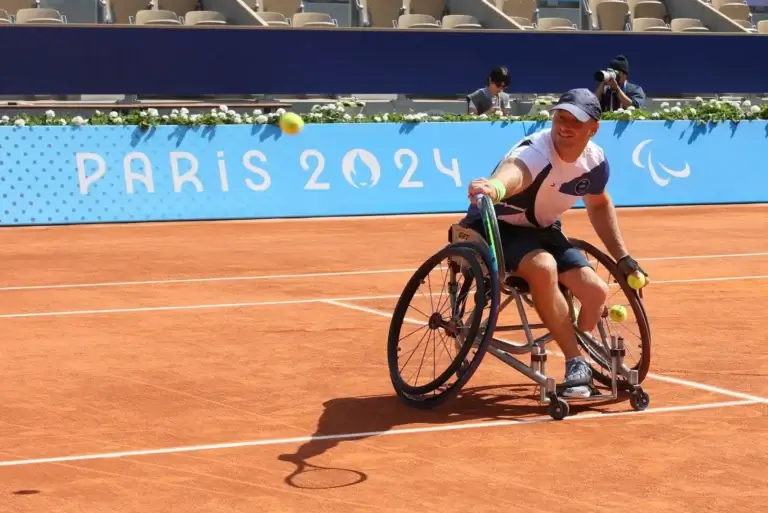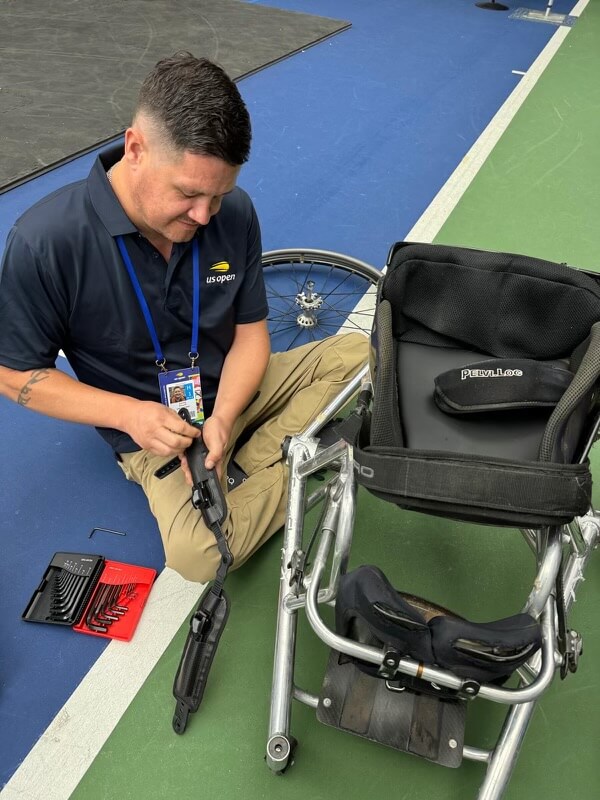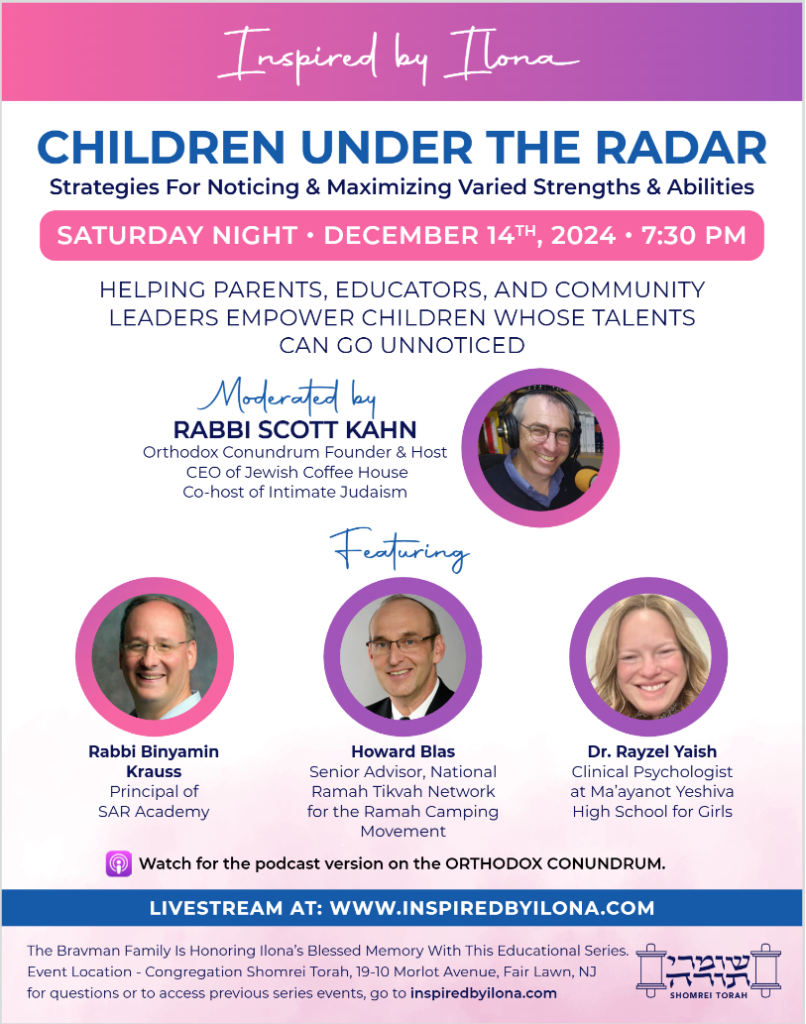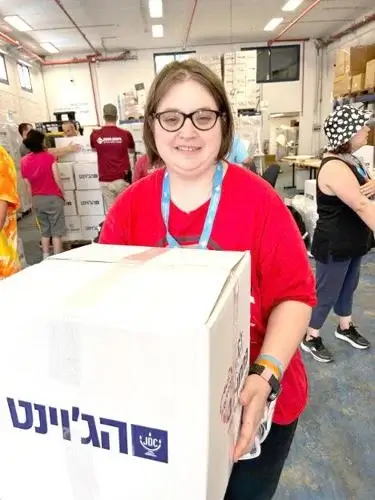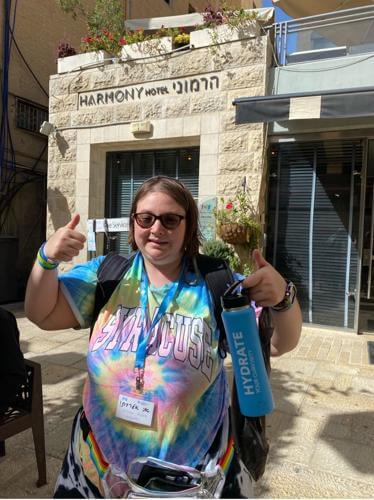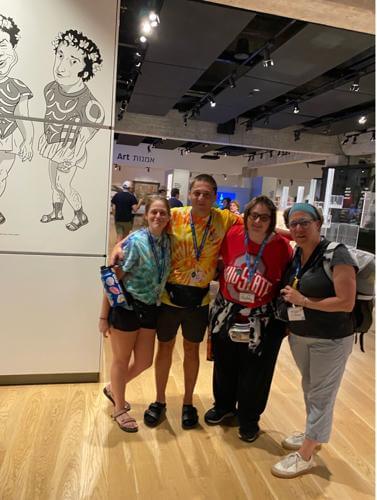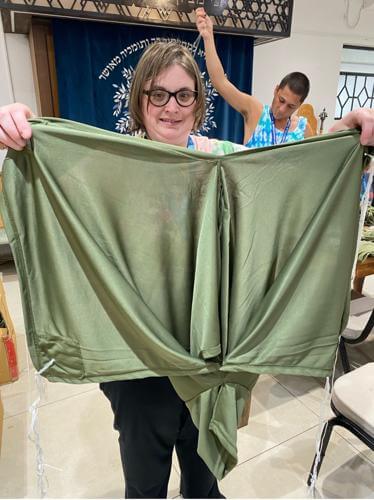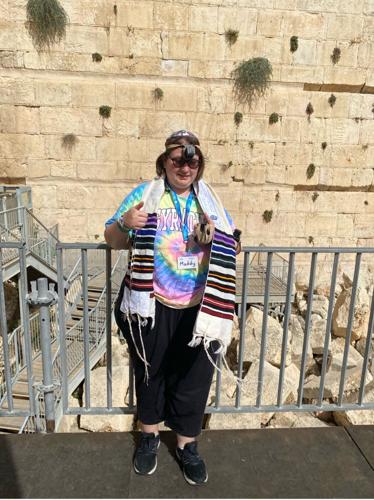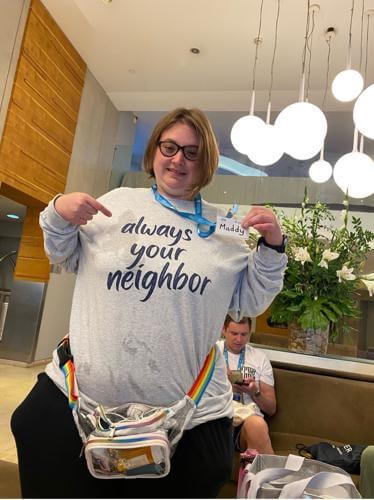Adam Berdichevsky at Paralympics ’24 Photo Credit | Keren Isaacson
You can view the original article here at www.melangeandco.com
For most elite wheelchair athletes, the road to the Paralympics involves years of intense physical and mental preparation. For Israeli tennis player Adam Berdichevsky, the year leading up to the recent Paris Paralympics was also a year of fighting off terrorists and multiple relocations. Despite these extraordinary challenges, Berdichevsky proudly represents his country and serves as a role model for people with disabilities on and off the court. His efforts continue to pay off.
Berdichevsky, 40, picked up wheelchair tennis after losing his left leg in a 2007 boating accident in Thailand. Berdichevsky and his then girlfriend (now wife), Hila, encountered a fierce storm. Their vessel capsized, sending both in to the rough waters. While saving Hila, Berdichevsky was reportedly sucked in to the engine, resulting in the loss of his leg.
In the years following the ordeal, the two married, Berdichevky became a mechanical engineer, and the family soon included three children. The family made their home on Kibbutz Nir Yitzchak, the same collective community where Adam grew up. Life on the kibbutz was usually tranquil, though missile threats from Hamas were not uncommon given their proximity to Gaza. Usually, the sounding of an alarm meant a short stay in the family’s safe room until the imminent threat passed.

This all changed on October 7, 2023 when Hamas launched 4,300 rockets in to Israel and 6,000 Gazans breached the border into Israel in over 100 locations. On that day, 1,200 people were killed and approximately 250 were taken to Gaza as hostages. Israelis near the border hid and feared for their lives.
Adam and Hila Berdichevsky and their three children–ages six, eight, and ten- survived the Hamas invasion at Kibbutz Nir Yitzchak by remaining in a safe room and clutching the door handle for 14 hours to keep it shut. Once the imminent danger passed, the family then relocated to Eilat (in the south of Israel) for two months.
Berdichevsky’s friend and fellow Israeli wheelchair tennis player, Guy Sasson, had been living in Houston, Texas with his family at the time as part of his wife’s medical training. Sasson suggested that the Jewish community bring the Berdichevsky family to Houston during these difficult times. “We are so thankful to the Houston Jewish community who provided us with a home, a car and school for the children,” reports Berdichevsky. “We were very welcomed!”

The family spent six months in Houston before returning to Eilat. Berdichevsky continues traveling around the world to tennis tournaments and the family is currently considering their next move, which may include returning to their adoptive community of Houston.
Berdichevsky shares, “I always loved tennis and also wanted to play a professional sport so the two naturally combined.” But he acknowledges that playing wheelchair tennis in light of recent events has presented some of the biggest mental challenges he has ever faced. “After learning that six hostages, including a former classmate, were murdered in the tunnels by Hamas, I had to compete in my Paralympic match—but it was incredibly difficult.”
This served to further motivate and inspire Berdichevsky as he played tennis for his beloved Israel in the Paris Paralympics this past September. “I cannot say how much fun it was to represent my country like this,” reports Berdichevsky after his first round wheelchair tennis win in Paris. “The win, it was the first time I played in front of a crowd like this, and it felt like I played at home – it was very special. I was very happy I could give some good times to people amid all the bad days.”
Earlier that same week, Berdichevsky served as the Israel delegations flag bearer. “The flag bearing was amazing, to walk with the whole Israel team was amazing – and everyone saw me on TV.” Berdichevsky lost his second-round match but he maintains his perspective given the ordeal he and his family survived on October 7th and the fate of so many others in his country. He observes, “It is much more important than ever to represent the country because of what happened and to be a model for all the soldiers who got injured.”
And his advice to young people with disabilities: “Play a sport, whatever it is. It would make your life much happier.”

